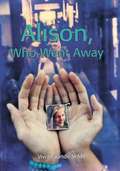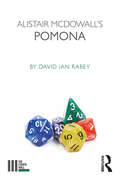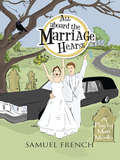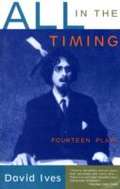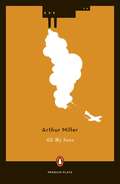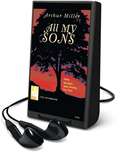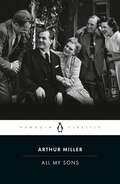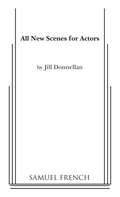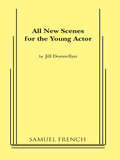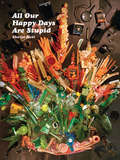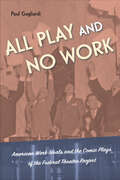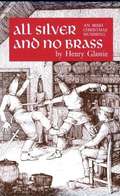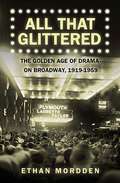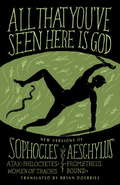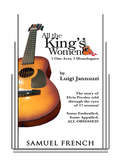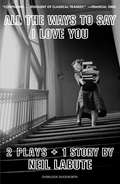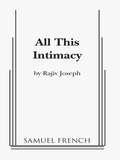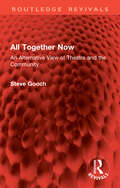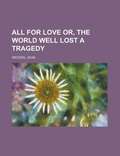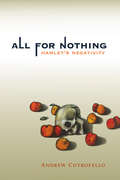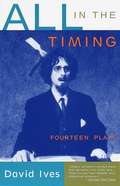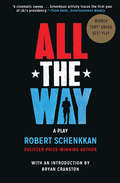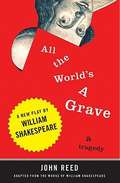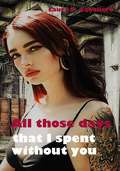- Table View
- List View
Alison, Who Went Away
by Vivian Vande VeldeFourteen-year-old Susan (or, as she prefers to be called, Sybil) has been trying to reinvent herself ever since the mysterious disappearance of her older sister, Alison. Life has been very confusing since Alison left. Susan's mother has become overly protective, fearful of losing another child. Her new school is not all bad, of course, but it is different and puzzling. Her best friend, Connie, has what could be a wonderful idea -- or maybe it has the makings of a disaster: if they sign up for the school play, they might end up with dates for the freshman dance. Readers will empathize with Susan's attempt to make sense of her confused world, the loss of her sister, a new school, turmoil at home, and the growing pains of adolescence. But Susan, despite all, remains bright, funny, and self aware with the help of a new and intelligently supportive stepfather and a lively group of school friends. The story is believable and touching and distinguished by the narrator's voice.
Alistair McDowall's Pomona (The Fourth Wall)
by David Ian Rabey‘It’s all real. All of it. Everything bad is real’ - Moe Alistair McDowall’s Pomona was first staged in 2014 and won properly startling, and startled, acclaim. Its edgeland setting permits a surrealistic disengagement of linear forms of time, which is both dreamlike and wildly funny; nightmarish and ominously enveloping. The play has as its imaginative springboard a landscape which is both real and surreal. It offers an unforgettable journey into radical uncertainty, alongside unpredictable action that presents and questions the forms by which all too much of British life is lived. Rabey offers us a wild plunge into this modern English urban rabbit hole, a haunting and bewildering high-stakes hunt for meaning and value, set in a gothic noir Manchester, possibly dystopian (or possibly not).
All Aboard the Marriage Hearse
by Matt MorilloComedy Drama / 1m, 1f /Simple Set Sean and Amy are your typical co-habitating, Catholic/Jewish, twentysomething couple living in Manhattan. They work hard, love each other and share common goals in life. Well, sort of. After nearly three years together, Amy wants to get married but Sean does not believe in the institution. The game is on!!! Tonight is the night when they will settle the marriage question once and for all. They will both bring their "A" game and the gloves will come off. Sean will try to talk her out of it. Amy will try to talk him into it. Will they break up? Will they keep going on the path they're on? Will they climb aboard the "Marriage Hearse?" It's the perfect show for anyone who has ever been married, will be married, wants to be married, doesn't want to be married, has thought about getting married, has been told they should be married, knows someone who is married, knows someone who wants to be married, knows someone who was married, knows someone who should be married, knows someone who shouldn't be married, has parents who are married, has parents who were married, has parents who shouldn't be married, and everyone else! What else would you expect from the team that brought you Angry Young Women In Low-Rise Jeans With High-Class Issues?
All In The Timing: Fourteen Plays
by David IvesThe world according to David Ives is a very odd place, and his plays constitute a virtual stress test of the English language -- and of the audience's capacity for disorientation and delight. Ives's characters plunge into black holes called "Philadelphias," where the simplest desires are hilariously thwarted. Chimps named Milton, Swift, and Kafka are locked in a room and made to re-create Hamlet. And a con man peddles courses in a dubious language in which "hello" translates as "velcro" and "fraud" comes out as "freud." At once enchanting and perplexing, incisively intelligent and side-splittingly funny, this original paperback edition of Ives's plays includes "Sure Thing," "Words, Words, Words," "The Universal Language," "Variations on the Death of Trotsky," "The Philadelphia," "Long Ago and Far Away," "Foreplay, or The Art of the Fugue," "Seven Menus," "Mere Mortals," "English Made Simple," "A Singular Kinda Guy," "Speed-the-Play," "Ancient History," and "Philip Glass Buys a Loaf of Bread."
All My Sons
by Arthur MillerCelebrating the Arthur Miller centennial year, an eye-catching new Penguin Plays edition of the work that established him as a leading voice in the American theater In 1947, Arthur Miller exploded onto Broadway with his first major work, All My Sons, winning both the New York Drama Critics' Circle Award for Best New Play and the Tony for Best Author. The play introduced themes that would preoccupy Miller throughout his career: the relationships between fathers and sons and the conflict between business and personal ethics. This striking new edition adds All My Sons to the elegant Penguin Plays series--now in beautifully redesigned covers. Joe Keller and Steve Deever, partners in a machine shop during World War II, turned out defective airplane parts, causing the deaths of many men. Deever was sent to prison while Keller escaped punishment and went back to business, making himself very wealthy in the ensuing years. A love affair between Keller's son, Chris, and Ann Deever, Steve's daughter; the bitterness of George Deever, who returns from the war to find his father in prison and his father's partner free; and the reaction of Chris Keller to his father's guilt escalate toward a climax of electrifying intensity.From the Trade Paperback edition.
All My Sons
by Arthur Miller edited by NISSIM EZEKIELThis book lets the students about ARTHUR MILLER and his works and It is very much useful for students with summary and text for better reading .
All My Sons: Drama Curriculum Unit (Hereford Plays Ser.)
by Arthur Miller Christopher W. BigsbyJoe Keller and Steve Deever, partners in a machine shop during World War II, turned out defective airplane parts, causing the deaths of many men. Deever was sent to prison while Keller escaped punishment and went back to business, making himself very wealthy in the ensuing years. In Miller's work of tremendous power, a love affair between Keller's son, Chris, and Ann Deever, Steve's daughter, the bitterness of George Keller, who returns from the war to find his father in prison and his father's partner free, and the reaction of a son to his father's guilt escalate toward a climax of electrifying intensity. Winner of the Drama Critics' Award for Best New Play in 1947, All My Sons established Arthur Miller as a leading voice in the American theater. All My Sons introduced themes that thread through Miller's work as a whole: the relationships between fathers and sons and the conflict between business and personal ethics. This edition features an introduction by Christopher Bigsby.For more than seventy years, Penguin has been the leading publisher of classic literature in the English-speaking world. With more than 1,700 titles, Penguin Classics represents a global bookshelf of the best works throughout history and across genres and disciplines. Readers trust the series to provide authoritative texts enhanced by introductions and notes by distinguished scholars and contemporary authors, as well as up-to-date translations by award-winning translators.
All New Scenes For Act
by Jill DonnellanThese 22 scenes are geared to actors over age 15 who are looking for something different, something a little disconcerting, and perhaps a little shocking! Perfect for acting classes, evenings of one acts, or private scene study.
All New Scenes For Young Actor
by Jill DonnellanThis collection of 14 scenes about contemporary topics appears to actors and actresses from 6 to 15. Issues range from baby-sitting and violin lessons to drugs and stolen money.
All Our Happy Days Are Stupid
by Sheila HetiTwo couples, each with a twelve-year-old child, travel to Paris; within a few moments of discovering each other in a crowd, one of their children disappears. A day later, one of the mothers disappears, too. The story that follows is a wonderfully strange, beautifully composed examination of happiness and desperation, complete with a man in a bear suit, a teen pop star, and eight really excellent songs.Sheila Heti's debut play was first commissioned in 2001, for a feminist theater company that never ended up staging it. Its turbulent creation became the backdrop of Heti's last novel, How Should a Person Be?, which was named a Best Book of the Year by the New York Times and the New Yorker-and now the play itself can be revealed at last. With new introductions by Sheila Heti and director Jordan Tannahill, All Our Happy Days Are Stupid offers a novel's worth of wisdom and humor, of wild hope and dreamlike confrontations, and page after page of unforgettable lines. Seen until now only by a lucky few, its publication is a cause for celebration.
All Play and No Work: American Work Ideals and the Comic Plays of the Federal Theatre Project
by Paul GagliardiMany of the Federal Theatre Project (FTP) plays Paul Gagliardi analyzes in All Play and No Work feature complex portrayals of labor and work relief at a time when access to work was difficult. Gagliardi asks, what does it mean that many plays produced by the FTP celebrated forms of labor like speculation and swindling? All Play and No Work directly contradicts the promoted ideals of work found in American society, culture, and within the broader New Deal itself. Gagliardi shows how comedies of the Great Depression engaged questions of labor, labor history, and labor ethics. He considers the breadth of the FTP’s production history, staging plays including Ah, Wilderness!, Help Yourself, and Mississippi Rainbow. Gagliardi examines backstage comedies, middle-class comedies, comedies of chance, and con-artist comedies that employed diverse casts and crew and contained radical economic and labor ideas. He contextualizes these plays within the ideologically complicated New Deal, showing how programs like the Social Security Act straddled progressive ideals and conservative, capitalist norms. Addressing topics including the politicization of theatrical labor and the real dangers of unchecked economic con artists, the comic plays of the FTP reveal acts of political resistance and inequality that reflected the concerns of their audiences.
All Silver and No Brass: An Irish Christmas Mumming
by Henry GlassieOn the folklore and oral history of mumming within a small community in the border area of Ireland and Ulster,this book provides insightful study of Irish folklife, and a fine presentation of mumming's memory culture.
All That Glittered
by Ethan MorddenFrom the late 1920s to late 1950s, the Broadway theatre was America's cultural epicenter. Television didn't exist and movies were novelties. Entertainment took the form of literature, music, and theatre. During this golden age of Broadway, actors and actresses became legends and starred in now classic plays. Laurence Olivier, Alfred Lunt and Lynne Fontaine were names to remember, etching plays into memory as they brought the words of Tennessee Williams or Eugene O'Neill to life. Joseph Cotton romanced Katherine Hepburn in Philip Barry's The Philadelphia Story while Laurette Taylor became The Glass Menagerie's Amanda Wingfield. Frederic March, Florence Eldridge, Jason Robards Jr. and Bradford Dillman showed us life among the ruins in Long Day's Journey Into Night. In All That Glittered, Ethan Mordden, long one of Broadway's best chroniclers, recreates the fascinating lost world of its golden age.
All That You've Seen Here Is God
by Sophocles Aeschylus Bryan DoerriesThese contemporary translations of four Greek tragedies speak across time and connect readers and audiences with universal themes of war, trauma, suffering, and betrayal. Under the direction of Bryan Doerries, they have been performed for tens of thousands of combat veterans, as well as prison and medical personnel around the world. Striking for their immediacy and emotional impact, Doerries brings to life these ancient plays, like no other translations have before.
All The King's Women
by Luigi JannuzziAll Groups / Comedy / 3f, 1m or up to 17f, 7m, or an all Female cast / Unit set The story of Elvis Presley told through the eyes of 17 Women! Some Enthralled, some appalled, ALL OBSESSED! A fast paced series of 5 comedic plays and 3 monologues based on the life of Elvis Presley. From Tupelo Mississippi--where an 11 year-old Elvis wanted a BB Gun instead of a guitar--to the Steve Allen Show, from President Richard Nixon's office, to Andy Warhol's studio, from Cadillac Salesmen, to Graceland guards, this is a touching, bring-the-family comedy with a heart that captures what fame, generosity and just being kind can do to others!
All The Ways to Say I Love You: Two Plays And One Short Story: Off-broadway Edition
by Neil LaBute“Compelling . . . a bleak vision redolent of classical tragedy.” —Financial Times In All The Ways To Say I Love You, Neil LaBute’s “haunting, heartrending” (AP) new play, Mrs. Johnson is a high school English teacher in a loving marriage. As she recounts her experiences with a favored student from her past, Mrs. Johnson slowly reveals the truth that is hidden just beneath the surface details of her life, in this riveting solo play about love, hard choices, and the cost of fulfilling an all-consuming desire. Two-time Tony winner Judith Light originated the role of Mrs. Johnson in a “full-throttle performance” (Time Out NY) for the twice-extended Off Broadway premiere, at MCC in fall 2016. Also included is All My White Sins Forgiven, the evocative one-act companion play that gives depth and context to All The Ways To Say I Love You. In this engrossing two-hander, Mrs. Johnson’s husband, Eric, and his friend Todd banter, shoot hoops, and work their way around to talking some truth about their lives, their marriages, their children, and their own secrets and dreams. Rounding out the volume and an inspiration for the two plays is the short story “With Hair of Hand-Spun Gold,” a masterfully crafted piece of prose that is pure Neil LaBute—as dark and timeless as any Grimm’s fairytale yet as chillingly modern as a teenage girl chatting with an anonymous new “friend” on the Internet.
All This Intimacy
by Rajiv JosephDramatic Comedy / Characters: 2 male, 4 female / Unit Set. / Ty Greene is a normal guy with three very big problems. In an unprecedented (for him) run of promiscuity, Ty has managed to impregnate three women in the span of one week: His ex-girlfriend, his 40-something married next-door neighbor, and his 18 year-old student. In this edgy comedy by playwright Rajiv Joseph, Ty's problems illuminate every triumph and failure of his life, and as the women in his world converge and figure out what's happened, Ty realizes that his life is adrift, and that he only has a limited time to try to piece it back together. All This Intimacy, which according to The New York Times has "a certain can't-look-away pull," is a comedy about friendship and lust and how the two don't mix. . "**** FOUR STARS! It's the best show I've seen in months! It's one worth catching!" -Matt Windman, amNY . "HAS A CAN'T-LOOK-AWAY PULL!" -The New York Times . "RIFE WITH GENUINE FUN & PINPOINTS OF POIGNANCY!" -Broadway.com . "A VERY BRAVE TOUCH WITH CHARACTERS & THEMES!" - New York Sun . "VERY FINE WRITING!" -TheaterMania.com
All Together Now: An Alternative View of Theatre and the Community (Routledge Revivals)
by Steve GoochIn All Together Now (first published in 1984), Steve Gooch, himself a playwright with extensive experience of ‘community theatre’, looks at the relationship of the theatre to the community in which it takes place. Taking the work of contemporary ‘community theatre’ as a stimulus, he gives a ‘behind-the-scenes’ analysis of the failure of commercial theatre—in the subsidised sector as well as the West End—to transcend the mechanisms of box-office and tradition, and to play a vital and integral part in the life of its audience. Examining the initiatives of small theatres and touring companies in the seventies, Gooch looks critically at their work practices and forms of organisation and draws some positive pointers for the future.As much about the internal workings of theatre production as about the content and outward face of its shows, All Together Now offers new insights into a culture divided between ‘high and low’, ‘popular and serious’.
All for Love; Or, The World Well Lost: A Tragedy
by John DrydenAll for Love or, the World Well Lost, is a heroic drama by John Dryden written in 1677. Today, it is Dryden's best-known and most performed play. <P> <P> It is a tragedy written in blank verse and is an attempt on Dryden's part to reinvigorate serious drama. It is an acknowledged imitation of Shakespeare’s Antony and Cleopatra, and focuses on the last hours of the lives of its hero and heroine.
All for Nothing: Hamlet's Negativity (Short Circuits)
by Andrew CutrofelloHamlet as performed by philosophers, with supporting roles played by Kant, Nietzsche, and others.A specter is haunting philosophy—the specter of Hamlet. Why is this? Wherefore? What should we do?Entering from stage left: the philosopher's Hamlet. The philosopher's Hamlet is a conceptual character, played by philosophers rather than actors. He performs not in the theater but within the space of philosophical positions. In All for Nothing, Andrew Cutrofello critically examines the performance history of this unique role. The philosopher's Hamlet personifies negativity. In Shakespeare's play, Hamlet's speech and action are characteristically negative; he is the melancholy Dane. Most would agree that he has nothing to be cheerful about. Philosophers have taken Hamlet to embody specific forms of negativity that first came into view in modernity. What the figure of the Sophist represented for Plato, Hamlet has represented for modern philosophers. Cutrofello analyzes five aspects of Hamlet's negativity: his melancholy, negative faith, nihilism, tarrying (which Cutrofello distinguishes from “delaying”), and nonexistence. Along the way, we meet Hamlet in the texts of Kant, Coleridge, Hegel, Marx, Schopenhauer, Kierkegaard, Nietzsche, Freud, Russell, Wittgenstein, Heidegger, Benjamin, Arendt, Schmitt, Lacan, Deleuze, Foucault, Derrida, Badiou, Žižek, and other philosophers. Whirling across a kingdom of infinite space, the philosopher's Hamlet is nothing if not thought-provoking.
All in the Timing: Fourteen Plays
by David IvesThe world according to David Ives is a very add place, and his plays constitute a virtual stress test of the English language -- and of the audience's capacity for disorientation and delight. Ives's characters plunge into black holes called "Philadelphias," where the simplest desires are hilariously thwarted. Chimps named Milton, Swift, and Kafka are locked in a room and made to re-create Hamlet. And a con man peddles courses in a dubious language in which "hello" translates as "velcro" and "fraud" comes out as "freud."At once enchanting and perplexing, incisively intelligent and side-splittingly funny, this original paperback edition of Ives's plays includes "Sure Thing," "Words, Words, Words," "The Universal Language," "Variations on the Death of Trotsky," "The Philadelphia," "Long Ago and Far Away," "Foreplay, or The Art of the Fugue," "Seven Menus," "Mere Mortals," "English Made Simple," "A Singular Kinda Guy," "Speed-the-Play," "Ancient History," and "Philip Glass Buys a Loaf of Bread."
All the Way: A Play
by Robert SchenkkanThis Tony Award–winning, “jaw-dropping political drama” chronicles LBJ’s fight for the Civil Rights Act and includes an introduction by Bryan Cranston (Variety). Winner of the 2014 Tony Award for Best Play, as well as Best Play awards from the New York Drama Critics’ Circle, the Outer Critics Circle, the Drama League, and numerous other awards, All the Way is a masterful exploration of politics and power from the Pulitzer Prize–winning playwright Robert Schenkkan. All the Way tells the story of the tumultuous first year of Lyndon Baines Johnson’s presidency. Thrust into power following the Kennedy assassination and facing an upcoming election, Johnson is nevertheless determined to end the legacy of racial injustice in America and rebuild it into the Great Society—by any means necessary. In order to pass the landmark 1964 Civil Rights bill, LBJ struggles to overpower an intransigent Congress while also attempting to forge a compromise with Martin Luther King, Jr., and navigate the increasingly fractious Civil Rights Movement. Breaking Bad star Bryan Cranston played President Johnson in the play’s celebrated Broadway production, for which he was awarded the Tony Award for Best Actor. In this edition, Cranston provides an illuminating and personal introduction.
All the World's a Grave
by John ReedRead John Reed's posts on the Penguin Blog. An epic tragedy of love, war, murder, and madness, plucked from the pages of Shakespeare In All the World's a Grave, John Reed reconstructs the works of William Shakespeare into a new five-act tragedy. The language is Shakespeare's, but the drama that unfolds is as fresh as the blood on the stage. Prince Hamlet goes to war for Juliet, the daughter of King Lear. Having captured Juliet as his bride--by reckless war--he returns home to find that his mother has murdered his father and married Macbeth. Enter Iago, who persuades Hamlet that Juliet is having an affair with Romeo. As the Prince goes mad with jealousy, King Lear mounts his army. . . This play promises to be the most provocative and entertaining work to be added to the Shakespeare canon since Tom Stoppard's Rosencrantz and Guildenstern Are Dead.
All those days that I spent without you
by Laura Pérez CaballeroThis is the story of the relationship between two sisters who have never had anything in common and who have not seen each other for many years. A chance encounter brings them back together and through different characters we see that the coincidences are not left in that encounter, taking the story to a point of no return in which the ending becomes an unexpected drama. A novel that mixes feelings with a police plot written in a simple way that pushes to read one chapter after another in search of the end of the story.
